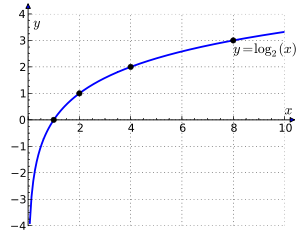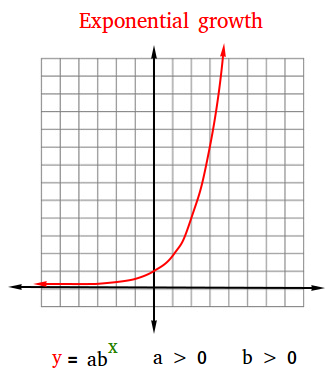“Shantaram, it’s high time you retire from the film industry” said Shankar Bhat, the owner of Prakash Pictures casually during a meeting of the Film Producers Guild. V Shantaram, the renowned director and the owner of Rajkamal Studios was taken aback. When asked for the reason he said, “Your last film, Zanak Zanak Payal Baje has been a blockbuster through which not only have you reached a pinnacle of success but the film is also considered as an epitome of creativity. You will never be able to repeat such a feat. Any subsequent film you make will be compared to this blockbuster.”
A few days later. G. D Madgulkar, a noted Marathi poet and writer narrated an experiment of an open prison and the rehabilitation of prisoners carried out by Maurice Frydman to Shantaram.
Maurice Frydman, a Polish Jew who came to India and was influenced by Mahatma Gandhi and guided the King of Aundh (Near Pune) draft the declaration for transfer of power from the king to the people of Aundh. It was during this process of giving self-governance to the citizens of Aundh, that a question came up about the prisoners. Frydman then took on the responsibility of taking care of the convicts in an open prison. An open prison is any jail in which the prisoners are trusted to complete sentences with minimal supervision and perimeter security and are often not locked up in their prison cells. Prisoners may be permitted to take up employment while serving their sentence. This provides an opportunity for criminals to reintegrate into society and withdrawal from their criminal behaviour. Without the constraints and stresses of typical incarcerations, criminals can discover more positive lifestyles through support and light supervision from the criminal justice system.
“It‘s a great plot, why don’t you make a preliminary draft on rehabilitation thro’ an open prison?” Shantaram said to Madgulkar. After a few days while reading the draft, Madgulkar himself got bored and said “The story does not have enough material to convert into a full-fledged film. The subject is too drab and boring.”
Shantaram said,” But I see a great potential to make a classic film out of this narrative. No doubt we need to hone the script more.” Looking at Shantaram’s enthusiasm, Madgulkar had no choice but to accede to his demand.
The film Do Ankhein Barah Haath slowly started taking shape. The title connotes the eyes of the jailor and the hands of convicts. The storyline revolved around six hard-core criminals who have been jailed for heinous crimes like murder, arson, looting and rape. The conventional perception of the legal and the prison setup was to brand a convict as a life-long criminal without any scope for reform. The convicts were thus jailed in inhuman conditions typical of any jail. The protagonist of the film Adinath (played by V. Shantaram himself) feels that people irrespective whether they are criminals or not, are human beings first. There is a possibility of reform by putting them in normal environment like an open prison.
Adinath takes the permission from his senior, the Superintendent of Police (SP) to take these six convicts to a place with minimal monitoring. There are some challenging moments Adinath faces in this novel experiment. Once the inmates make a request to go to the nearest town. Adinath permits them with a caveat that they should return by the sunset. He goes through some anxious moments as the day comes to a close and gets relieved to see them back though a bit late.
The inmates are engaged in a daily routine of clearing the shrubs, digging well and plant vegetable. Within a few months the barren land is converted to a green area with fresh vegetables. Adinath asks them to sell the produce at the village with nominal profit. The local traders charging high rates till then get upset with the new competition.
The inmates do not return home in time. Adinath is perplexed about his decision on granting freedom. The inmates return late fully drunk. Adinath not only gets furious but also anxious about the outcome of his experiment. The next day he gets to know that the local trader has coaxed them in getting drunk and go berserk.Not able to digest the success of the farm, the local trader sends his goons and the bulls to destroy the crop. While making a valiant fight with the bull, Adinath breathes his last.
The SP who was initially a sceptic of this experiment, is now fully convinced of the transformation Adinath had brought about in the convicts. “You have served your sentence and are free to go back home.” Says the SP. The inmates decline the offer and decide to continue the work as inspired by their mentor, Adinath.
What made V. Shantaram take on such a challenging film? The seven types of motivators which define a creative personality are Pioneering Motivation, Self-Actualization, Altruism, Career Success, Hedonism. Security Motivation and Affiliation. (1)
Out of the above, the Pioneering Motivation, Self-actualization and Altruism need to be very high; Hedonism and Career Success need to be moderate and the security and the affiliation motivation need to be low for a creative personality.
Pioneering Motivation: Do Ankhein Barah Hath was an off-beat, black and white movie sans glamour with no tricks of the trade like love triangle, expensive sets, or iconic stars.
Self-Actualization: When Shankar Bhatt asked him to retire after the phenomenal success of Zanak Zanak Payal Baje, Shantaram questioned himself and his own identity and the purpose of life. He decided not to rest on the past laurels.
Altruism: The protagonist Adinath believed in the inherent goodness of people He sacrifices his life to help the prisoners let go of the past.
Security Motivation: His scriptwriter told him that the plot was too mundane and there is not much drama to make into a full-fledged film. Shantaram thought otherwise. He looked at the worst case scenario. His earlier film Zanak Zanak Payal Baje was a runaway hit. Shantaram was willing to write off even if this film were to flop at the box office. .
Career Success: Intuitively Shantaram knew that the film will come out well and will be appreciated by the audiences. He did not get into the success trap of comparison with the success of his preceding films. In a way he did not become a prisoner of his past success!
Affiliation: This motivation is to tread the beaten path and need to be very low for a creative person. Madgulkar who was asked to write the screenplay got bored while narrating the first draft. Shantaram did not give up.
The film was premiered at Opera House in Mumbai on 27th September 1957. It was attended by the staff of Rajkamal Studios, friends, relatives and acquaintances of V Shantaram along with celebrities from the Bombay Film industry (now Bollywood). Even if the film were to be a disaster, audiences would make kind remarks about the film’s success out of courtesy. But the scene was quite different. Forget an applause, there was a total silence. Vijay Bhatt, a film a producer said, “You have said something different in this film.” Save this remark, there were hardly any comments. One could hear people whispering: had it not been for V. Shantaram, the film would hardly run for 5-6 weeks. The film reviews in the media were more towards criticism rather than praise. (2)
Do Ankhein Barah Haath ran for 65 weeks in Opera House and proved the naysayers wrong. The then Mumbai Police Commissioner had issued an unofficial dictum making the film mandatory for every policeman.
‘Ae Malik tere Bande Hum’, the prayer song was played in many schools and jails across the country and also in Pakistan. The film won the Best Film and the Best Direction award from the Govt of India. It was honoured with the best Foreign Film Award in the Berlin Film festival.
V. Shantaram wanted to acknowledge the contribution made by Maurice Frydman by including him in the film credits. Maurice flatly refused.
The black-and-white film had no glamour, a drab subject and an idealistic protagonist. Madgulkar the scriptwriter, the Staff at Rajkamal Studios, the celebrities of the film industry, or the media; none of them predicted a decent run for the film, leave aside the commercial success or the critical acclaim. Shantaram swam against the tide and showed what it means to be a maverick.
As someone has said, “if you can visualize the invisible, you can accomplish the impossible!”
References:
- The Fourth Eye – Pradip Khandwala, the seven indicators of creativity are discussed in detail. The different levels of motivation be it high, medium or low can be understood through the questionnaire. Blockages to creativity and the ways to enhance are also discussed.
- Ten Classics – Anita Padhye

































